- News
- Reviews
- Bikes
- Components
- Bar tape & grips
- Bottom brackets
- Brake & gear cables
- Brake & STI levers
- Brake pads & spares
- Brakes
- Cassettes & freewheels
- Chains
- Chainsets & chainrings
- Derailleurs - front
- Derailleurs - rear
- Forks
- Gear levers & shifters
- Groupsets
- Handlebars & extensions
- Headsets
- Hubs
- Inner tubes
- Pedals
- Quick releases & skewers
- Saddles
- Seatposts
- Stems
- Wheels
- Tyres
- Tubeless valves
- Accessories
- Accessories - misc
- Computer mounts
- Bags
- Bar ends
- Bike bags & cases
- Bottle cages
- Bottles
- Cameras
- Car racks
- Child seats
- Computers
- Glasses
- GPS units
- Helmets
- Lights - front
- Lights - rear
- Lights - sets
- Locks
- Mirrors
- Mudguards
- Racks
- Pumps & CO2 inflators
- Puncture kits
- Reflectives
- Smart watches
- Stands and racks
- Trailers
- Clothing
- Health, fitness and nutrition
- Tools and workshop
- Miscellaneous
- Buyers Guides
- Features
- Forum
- Recommends
- Podcast
review
£1,470.00
VERDICT:
Very good groupset that brings wireless electronic shifting to a lower price point than ever before
Wireless electronic shifting
Reliable disc brakes
Power meter option
Accessible price for the level of tech
Not light
Can't add supplementary shifters
Weight:
3,408g
Contact:
At road.cc every product is thoroughly tested for as long as it takes to get a proper insight into how well it works. Our reviewers are experienced cyclists that we trust to be objective. While we strive to ensure that opinions expressed are backed up by facts, reviews are by their nature an informed opinion, not a definitive verdict. We don't intentionally try to break anything (except locks) but we do try to look for weak points in any design. The overall score is not just an average of the other scores: it reflects both a product's function and value – with value determined by how a product compares with items of similar spec, quality, and price.
What the road.cc scores meanGood scores are more common than bad, because fortunately good products are more common than bad.
- Exceptional
- Excellent
- Very Good
- Good
- Quite good
- Average
- Not so good
- Poor
- Bad
- Appalling
SRAM's new third-tier Rival eTap AXS groupset might lack a little of the glamour of the brand's higher-level Red and Force offerings, but it puts in a great performance across the board, providing very good wireless electronic shifting and impressive braking, plus the option of a new crankset-based power meter. On top of that, the price makes electronic shifting available to more riders than ever before.
We'll go through the individual components in turn, but first let's look at what the groupset as a whole offers.
It's a 12-speed system that's available in 1x (single chainring) and 2x (double chainring) options. I've been using 2x with a 43/30-tooth chainset and a 10-36 cassette. Ours is a Wide system, meaning that the chainset offers wider stance arms and chainrings than usual to provide space for larger tyres. Everything works in the same way as for a standard system.
> Buy now: SRAM Rival eTap AXS groupset from Sigma Sports for £1470.00
SRAM Rival eTap AXS offers only wireless electronic shifting and hydraulic disc braking. It's suitable for both road and gravel riding.
Most of the tech found in SRAM's Rival eTap AXS (pronounced 'access') groupset has trickled down from Red and Force, most notably the wireless electronic shifting which is more accessible than ever before. The electronics are exactly the same as for the more expensive groupsets – the same motors, switches, batteries, and so on.
Of course, SRAM has had to make certain changes to reduce the price. The rear derailleur has a spring clutch rather than the Orbit fluid damper system found on Red and Force, for instance, and you can't add auxiliary remote shift buttons to the normal drop-bar shifters. Rival eTap AXS also uses cheaper materials in some areas – the cranks are aluminium rather than carbon, for example.
Inevitably, the cheaper materials increase weight; Rival eTap AXS is certainly a chunk heavier than either Force or Red. That's to be expected, but overall Rival is still an excellent groupset that's already shaking up the market.
SRAM Rival eTap AXS Shift/Hydraulic Disc Brake System
£185 per unit/brake
Weight: 845g
Options reviewed: Rear brake/left shift, front brake/right shift
Other options: Rear brake/right shift, front brake/left shift
Rival eTap AXS shifters have a lot in common with those from SRAM's more expensive Red and Force eTap AXS groupsets but they're slightly smaller so you can wrap your hands around them a little more easily. They're still not as small as Shimano Di2 levers, though.
SRAM has been able to shrink the levers down because it has left out remote shifter ports and contact point adjustment (so you can't alter the point in the lever stroke at which the brake pads touch the rotor) in order to keep the cost down.
You do still get reach adjustment, though, so you can set the distance from the bar to the levers so that it's suitable for your hand size. This is simply a matter of using a 2.5mm hex key to turn a bolt that sits just behind the lever. You'll have it sorted in a minute.
The brake lever is made from LFRT (long fibre-reinforced thermoplastic) rather than the carbon you get with Force, but the brakes and shifters are just as easy to operate from both the hoods and the drops. The hoods are textured so there's little chance of your hands slipping even on rough roads, and grooves in the plastic shift paddle mean your fingers are unlikely to slide on those either. I got caught in a huge storm yesterday, for example – it wasn't just raining, it was absolutely taking the piss – and despite cold, soaking fingers I had no issues at all with changing gear.
Like existing eTap AXS drop handlebar shifters, these use CR2032 coin cells. SRAM reckons that if you ride 15 hours a week you won't need to change them for two years. When it is time for new ones, that's another easy job – just get something like a coin to turn the top of the battery compartment (hidden on the underside of the shifter body) and a knife or small screwdriver to prise it off.
The flat mount brake callipers are two-piston and very similar to the Red and Force options, providing as much easily modulated power as you can handle. In fact, the braking performance is indistinguishable from SRAM's more expensive options.
Checking/changing the pads is straightforward enough, and although the bleed process is slightly different from Red and Force – you don't get SRAM's Bleeding Edge snap-into-place bleed port, it's a threaded design instead – there's nothing to get worried about here either.
Like existing SRAM eTap AXS systems, pushing the right lever moves the chain down the cassette, pushing the left lever moves the chain up the cassette, and pushing both together operates the front derailleur, shifting to whichever chainring you're not currently using.
Those are the default settings but you can swap things around via SRAM's free AXS mobile app. You can also do things like alter the Multishift setting to select the number of sprockets the chain moves when you press and hold a shift lever, or select Compensating mode to shift the rear derailleur automatically when you shift the front derailleur to reduce the jump in ratios.
SRAM Rival eTap AXS D1 Front Derailleur
£162
Weight: 182g
Option reviewed: Wide
Other options: Standard
Graphics aside, SRAM's Rival eTap AXS front derailleur is virtually indistinguishable from the Rival model. It comes in two different versions, one for use with 46/33T and 48/35T cranksets with standard length spindles, and the other for use with the 43/30T Wide crankset which has a longer spindle – and this is the one that I've been using.
SRAM reckons that the widest 700C tyre that will work alongside the standard front derailleur is 42mm, while the Wide version gives you space for a tyre up to 45mm.
The two different versions work in the same way, each using SRAM's Yaw technology, meaning that the cage pivots slightly when you shift, to avoid chain rub and the need to trim as you move across the cassette. I had no worries at all with chain rub during testing, just clean, reliable shifts with no hint of hesitancy.
As mentioned up top, the electronic gubbins that SRAM uses for Rival eTap AXS are exactly the same as for Red and Force so there's no reason for the shifting to be any different, and that has been my experience. If set up correctly, there's not a great deal of difference between SRAM and Shimano Di2 either. Maybe Di2 is slightly quicker, but there's not a lot in it.
I wish I had more to tell you – a bit of a plot twist to keep you interested – but whether upshifting or downshifting, under heavy load or light load, the derailleur just did what it was supposed to do without any drama. Sorry.
Each derailleur has its own battery – identical to those used by SRAM Red and Force eTap AXS – that'll give you about 60 hours of riding between charges, although the exact amount of time depends on how often you change gear, of course.
The derailleur batteries are interchangeable so if the rear one runs out you can shift to your preferred chainring and then swap them over. That way you can get home with rear shifting.
SRAM Rival eTap AXS D1 Rear Derailleur
£236
Weight: 366g
Option reviewed: One
Other options: N/A
The Rival eTap AXS rear derailleur, designed for both 1x and 2x drivetrains, works with cassettes that have a largest sprocket size of 28-36 teeth. That means you can't run it with a SRAM Red 10-26T cassette, although that won't be a concern for most users.
Its drivetrain tooth capacity (the difference between tooth numbers on the inner and outer chainrings plus the difference between tooth numbers on the smallest and largest sprockets) is 39. I've been using it with a 43/30T chainset and a 10-36T cassette, which is the maximum it can handle.
Shifting has been reliable up and down the cassette and it's just as quick as Force AXS. It has certainly never struck me as slow. As with the front derailleur, there's little to report in this respect. The Rival eTap AXS rear derailleur just gets on with it without a huff, never mind a puff.
Whereas the SRAM Red eTap AXS rear derailleur features a carbon cage and ceramic pulley bearings, Force and Rival use an aluminium cage and steel bearings.
Red and Force eTap AXS rear derailleurs also use SRAM's Orbit fluid damper system to keep the chain in place and the drivetrain quiet when you're riding over rough roads. These use silicon fluid to reduce excessive movement. Rival is different in that it uses a mechanical spring clutch instead.
The fluid Orbit damper is a clutch that allows the cage to rotate with minimal perceived torque under normal, smooth riding conditions. As conditions become rougher the chain retention on the clutch increases progressively as the rotational velocity of the cage increases.
The spring clutch in Rival eTap AXS is designed to be linear throughout all riding conditions and cage positions. Despite the rotational velocity of the cage, the spring clutch maintains a linear level of torque whether on smooth or rough terrain.
I've been using this system on gravel as well as smooth tarmac and, yeah, you can get chain slap occasionally but nothing major and I've never managed to unship the chain. It's quiet too.
You can run the chain on the large chainring and the largest sprocket if you like (although you might choose not to cross-chain, of course) but the small chainring/small sprocket combination is locked out. The rear derailleur won't allow it in order to avoid the chain rubbing against the inside of the large chainring. If the chain is on the small chainring and you try to shift to the smallest sprocket, the rear derailleur LED will flash alternate green and red to indicate a rejected shift. If the chain is on the large chainring and the smallest sprocket and you shift to the small chainring, the system will automatically shift to the next sprocket up.
SRAM Rival D1 Quarq Dub Power Meter
£322
Weight: 871g
Option reviewed: 175mm cranks, 43/30T chainrings
Other options: 160mm, 165mm, 170mm, 172.5mm cranks; 48/35T, 46/33T, 38T, 40T, 42T, 44T, 46T chainrings; non-power meter cranksets available
This Rival D1 Quarq Dub Power Meter is a really interesting new component comprising the cranks, the chainrings (or chainring – singular – if you go for a 1x system), and the power meter itself which is contained within the spindle. This power meter model is less than 40g heavier than a non-power crankset.
The power meter measures left-side (non-driveside) power only, and doubles this to give your total watts. In other words, unlike Quarq and SRAM spider-based power meters, it assumes that your two legs deliver an equal amount of power.
My experience with dual-sided power meters suggests that my output is rarely 50:50, and the same is true of many other people, so a single-sided system is a slight compromise in this respect.
We'll run a full review of the SRAM Rival D1 Quarq Dub Power Meter separately, comparing the power readings to those of other systems – but that's not quite ready yet.
The big advantage of a single-sided system is the price. A standard Rival crankset is £120, so go for the power meter version and you're paying an extra £202.
More good news is that if you already have a standard Rival crankset on your bike and fancy upgrading to power measurement, you don't have to shell out £322 on a complete new system. Instead, you can buy a left crank and the spindle containing the power meter, and use this with your existing right crank and chainring(s). This will set you back £230, so it's a really cost-effective solution.
The Rival D1 Quarq Dub Power Meter has an IPX7 waterproof rating. Believe me, I've been caught in a few horrendous storms over the past few weeks – cloudbursts that have seen water flowing out of the vents in my shoes – and the power meter hasn't been bothered in the slightest. And that's more than you can say for the shoes.
SRAM claims a battery life of over 400 hours. I've not racked up 400 hours over the test period so I can't confirm that, but we're talking about a replaceable lithium AAA battery (an alkaline battery will result in low battery messages almost immediately) that costs less than a quid, so if you don't get your 400 hours you probably won't care too much.
You can buy the Rival AXS Power Meter with 48/35T and 46/33T chainrings and a standard axle, or with 43/30T chainrings and a Wide axle, which is the option I've been using. You can also buy it in a 1x configuration with a Wide axle, with chainrings from 38T to 46T. Bear in mind that a bottom bracket isn't included.
The Rival power meter can be used with any cycling computer or cycling-specific app that supports ANT+ and/or BLE (Bluetooth Low Energy) power meter connectivity.
Taking power out of the equation, the Rival crankset is a solid rather than a spectacular offering. It's not as light, refined or pretty as more expensive Red or Force versions, but that's what you'd expect. The cranks are aluminium rather than carbon fibre, for example, and rather than being hollow, the inner faces are scooped out to save weight.
Rival eTap AXS 2x cranksets have an integrated spider, whereas the 1x cranksets use a direct-mount chainring. You can't swap between 2x and 1x like you can with Red and Force.
In terms of function, though, it's all good. Changing up from the 30T chainring to the 43T under load is quick and smooth, and I never dropped the chain even when riding like a loon on rough, potholed gravel. I'm sure it's possible to drop the chain, but in two months of riding it hasn't been an issue for me.
SRAM Rival XG-1250 D1 Cassette
£112
Weight: 338g
Option reviewed: 10-36T
Other options: 11-30T
All the sprockets on the 12-speed cassette are made from steel with a nickel-chrome plating, with damper rings between them designed to reduce vibration.
There are just two different Rival cassettes to choose between: 11-30T and 10-36T. That might seem limited, but the system is also compatible with SRAM Red and Force 12-speed cassettes from 10-28T up to 10-36T. Each cassette works with an XDR driver body (XDR is a mounting system for cassettes that feature sprockets with fewer than 11 teeth).
I've been using the 10-36T cassette with sprocket sizes 10, 11, 12, 13, 15, 17, 19, 21, 24, 28, 32, 36.
Matched up with the 43/30T chainrings, this gives you a 516% gear range. In other words, the biggest gear is over five times the size of the smallest one.
SRAM has kept the differences in sprocket size down to one tooth at the bottom of the cassette, so your rhythm isn't disrupted much when you need to change gear while riding fast.
Inevitably, the four-tooth jumps at the top of the cassette can jar slightly and you need to establish a very different tempo once you've shifted. That can be a bit annoying at times, particularly if you find yourself flicking up and down between two different ratios, unable to decide which works best.
On the other hand, the benefit of a wide-ranging cassette like this is that you're unlikely to run out of gears at either end – or, at least, not so often that it's a pain.
If you work in gear inches, the 43x10 top gear (I had 700C x 30mm tyres on my bike) is 115.46in while the 30x36 smallest gear is 22.29in. That's really small!
The 43x10 gets you to 34mph at a cadence of 100rpm and 41mph at 120rpm, so it'll see you right on most descents before your legs disappear into a blur and can't keep up.
One thing I'd say about the gearing is to take some time making sure you get the right option for you before spending your cash. SRAM's unorthodox chainring and cassette sizes might have been around for a few years now but a lot of us are more used to more traditional ranges. Something like Sheldon Brown's Gear Calculator is your friend here.
After two months of regular use – a bone dry month followed by an incredibly wet month – the cassette shows minimal signs of wear and no corrosion, although, to be fair, you wouldn't expect much at this stage.
SRAM Rival D1 Flattop Chain
£28
Weight: 266g
Option reviewed: One
Other options: N/A
The Rival chain is a similar Flattop design to the ones SRAM uses for Red and Force, although Red has hollow pins to save weight whereas Force and Rival have solid pins.
The plates on 12-speed chains are thinner than those of 11-speed and the extra material added at the top is designed to maintain the strength.
The Rival chain is compatible with all 12-speed 1x and 2x eTap AXS drivetrains and includes a Flattop PowerLock tool-less connector.
The money bit
Rival eTap AXS provides electronic shifting at a more accessible price than ever before. Prices vary a little according to the spec you choose, but you're looking at:
- Shift/brake system £185 x 2 = £370
- Front derailleur £162
- Rear derailleur £236
- Crankset £120
- Cassette £112
- Chain £28
- Rotors (pair) £100
- Batteries £50 x 2 = £100
- Charger £40
- Total £1,268
This is for a 2x system without a power meter (and bottom bracket price is not included).
If you go for 1x, you'll save £162 on the front derailleur, plus £50 on its battery, so the total would be £1,056.
This makes SRAM Rival eTap AXS the cheapest electronic groupset from the three big brands, and it's far easier to install than options from either Shimano or Campagnolo.
For comparison, a 2x SRAM Force eTap AXS groupset is £1,540 while a 1x system is £1,295, and the prices for SRAM Red are £3,315 and £2,815, respectively.
Most users will buy Rival eTap AXS as part of a complete bike. The most accessible that we've heard of so far is the Boardman 9.4 Disc at £2,700, although most are considerably more expensive.
Weights
Here are the weights for the various SRAM Rival eTap AXS components:
- Shift/Hydraulic Disc Brake System 845g
- Crankset 703-844g
- Front derailleur 180-182g
- Rear derailleur 366g
- Cassette 282-338g
- Chain 266g
- Rotors 157g x 2 = 314g
A 1x system weighs around 2,776g (it'll vary on the exact components chosen) while a 2x system weighs about 3,097g.
Those figures are certainly heavier than existing electronic groupsets. SRAM claims a Force eTap AXS 1x system is 2,572g while a 2x setup is 2,812g.
An equivalent Shimano Ultegra Di2 system (it's difficult to get a precise figure because you're not comparing like with like) is roughly 550-600g lighter than SRAM Rival eTap AXS.
Overall
SRAM says that it aims to offer Rival eTap AXS users the same riding experience as you get with Red or Force, and it has absolutely nailed that. When you're riding along, everything works the same way as it does with those more expensive groupsets: the shifting is as quick, the braking is as reliable, there's no noticeable difference in the amount of chainslap over rough roads... There's really not a lot to tell them apart.
The biggest differences are in the weight and price. SRAM Rival eTap AXS is the heaviest electronic groupset out there but it's also the cheapest... by a considerable margin. And the power meter upgrade is a really interesting option for those wanting to experience training by wattage, perhaps for the first time.
One of cycling's eternal questions is: which do you want most, a lighter weight or a lower price? You need to answer that for yourself, but if you do opt for Rival eTap AXS you're going to find out that the compromises SRAM has had to make in order to hit the price point really don't detract much from the performance, which is why this new groupset is really shaking up the market.
Verdict
Very good groupset that brings wireless electronic shifting to a lower price point than ever before
road.cc test report
Make and model: SRAM Rival eTap AXS groupset
Size tested: Wide 43/30, 10-36T
Tell us what the product is for and who it's aimed at. What do the manufacturers say about it? How does that compare to your own feelings about it?
SRAM says:
Experience a better bike ride. SRAM Rival eTap AXS features the technology modern riders want - intuitive wireless shifting, innovative gearing, integrated power measurement, AXS connectivity, and refined hydraulic disc brakes. It's low on complexity, but rich with features.
WIRELESS SHIFTING
It's clean, secure and reliable technology to match your modern bicycle. eTap wireless shift logic is simple and intuitive to ride: one button to go easier, one to go harder.
CAPABLE AND EFFICIENT GEARING
12-speed gearing provides wider range and tighter jumps so that you're always in the right gear, whether climbing a fire road or sprinting for a town line. Plus, SRAM Rival eTap AXS has multiple gearing options to tailor your bike to your specific needs.
INTEGRATED POWER METER OPTION
Accurate and reliable Quarq power measurement elegantly hidden inside a DUB crank spindle. Easy to install, easy to use, with a lower barrier to entry than ever. Measure your progress and achieve your riding goals.
AXS ENABLED
Control, personalization, and monitoring are at your fingertips with the AXS mobile app. Build a bike profile, customize your shifting, check battery charge status, and update firmware as needed right from your phone.
DISC BRAKES FOR SUPREME CONTROL
SRAM Rival eTap AXS provides the best braking experience for all riders. Sure, there's power when you need it, but it's the pinpoint control and reach adjustability for different hand sizes that set our brakes apart.
Tell us some more about the technical aspects of the product?
The wireless shifting is arguably the star of the show. The system is essentially the same as SRAM uses for its more expensive Red and Force eTap AXS ranges but using cheaper materials in certain areas, bringing down the price but also increasing the weight.
Rate the product for quality of construction:
8/10
Rival eTap AXS uses cheaper materials than Red or Force in some areas – the aluminium cranks are notably heavier, for example – but the build quality is high.
Rate the product for performance:
9/10
The shifting and braking performances are very similar to those of Red and Force, it's just that Rival is heavier.
Rate the product for durability:
8/10
Rate the product for weight (if applicable)
5/10
This is a difficult one to mark in that Rival eTap AXS is heavier than other electronic groupsets. On the other hand, you can't compare it to other electronic groupsets of its price – which would be the fair thing to do – because there are no other electronic groupsets at this price.
Rate the product for value:
8/10
Tell us how the product performed overall when used for its designed purpose
When you're riding along, there's very little to tell Rival eTap AXS apart from Red or Force – it's just that when you look closely you'll see that cheaper materials are used and the weight is higher.
Tell us what you particularly liked about the product
The simple wireless shifting, the price.
Tell us what you particularly disliked about the product
It's heavier than other electronic groupsets
How does the price compare to that of similar products in the market, including ones recently tested on road.cc?
I've gone into this in more detail towards the end of the review, but Rival eTap AXS is the cheapest electronic groupset out there (assuming full RRPs, of course).
Did you enjoy using the product? Yes
Would you consider buying the product? I would.
Would you recommend the product to a friend? Yes
Use this box to explain your overall score
It's a very good system at a very good price. That's clearly an 8 on our score system.
About the tester
Age: 48
I usually ride: My best bike is:
I've been riding for: Over 20 years I ride: Most days I would class myself as: Expert
I regularly do the following types of riding: commuting, club rides, sportives, general fitness riding,
Mat has been in cycling media since 1996, on titles including BikeRadar, Total Bike, Total Mountain Bike, What Mountain Bike and Mountain Biking UK, and he has been editor of 220 Triathlon and Cycling Plus. Mat has been road.cc technical editor for over a decade, testing bikes, fettling the latest kit, and trying out the most up-to-the-minute clothing. He has won his category in Ironman UK 70.3 and finished on the podium in both marathons he has run. Mat is a Cambridge graduate who did a post-grad in magazine journalism, and he is a winner of the Cycling Media Award for Specialist Online Writer. Now over 50, he's riding road and gravel bikes most days for fun and fitness rather than training for competitions.
Latest Comments
- slc 34 sec ago
Agreed, although women face additional barriers in busy places too. All the women cyclists I know report a much higher level of abusive behaviour...
- headingley 19 min 13 sec ago
Who actually cares if "bike to work" bikes aren't actually used for daily commuting ? (Apart from The Telegraph, of course) The fact that you can...
- Hirsute 27 min 48 sec ago
He does it to make a point. As I remember from his videos he is rarely not in control of the situation. Although as it's all on shitter these days,...
- Car Delenda Est 30 min 32 sec ago
Probably worth pointing out at some point that the Telegraph is on the Cycle to Work Scheme..
- mark1a 32 min 41 sec ago
It gets posted in road.cc comments around six times daily.
- mdavidford 33 min 46 sec ago
But if it's a bridleway or a permissive path they're within their rights to be.
- Secret_squirrel 1 hour 15 min ago
This is my favourite rant - but I really dont see the point of windproof cycling clobber that isn't properly waterproof - especially for the UK. ...
- leedorney 1 hour 24 min ago
Whenever I drive, which isn't much, I often wonder why other seem to just not care at all, it's like so sense and appreciation for any other human...
- chrisotherwise 1 hour 34 min ago
Thanks for all the kind replies. I was back on my bike yesterday and went and had a look at where I had my fall. No obvious diesel on the road or...
- Bob Sprocket 1 hour 42 min ago
Toe clips, now we're talking.




































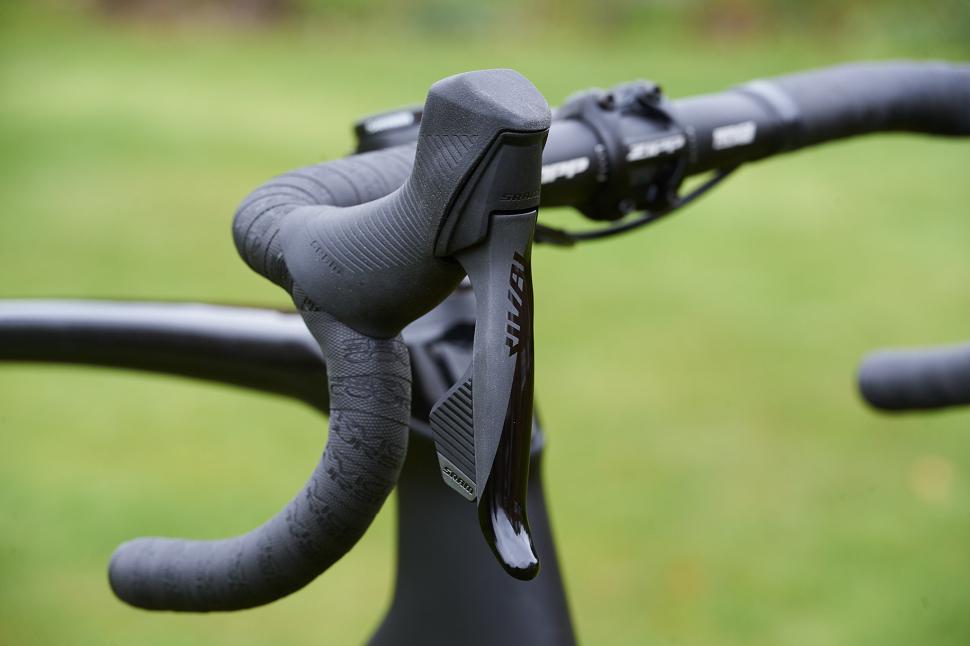
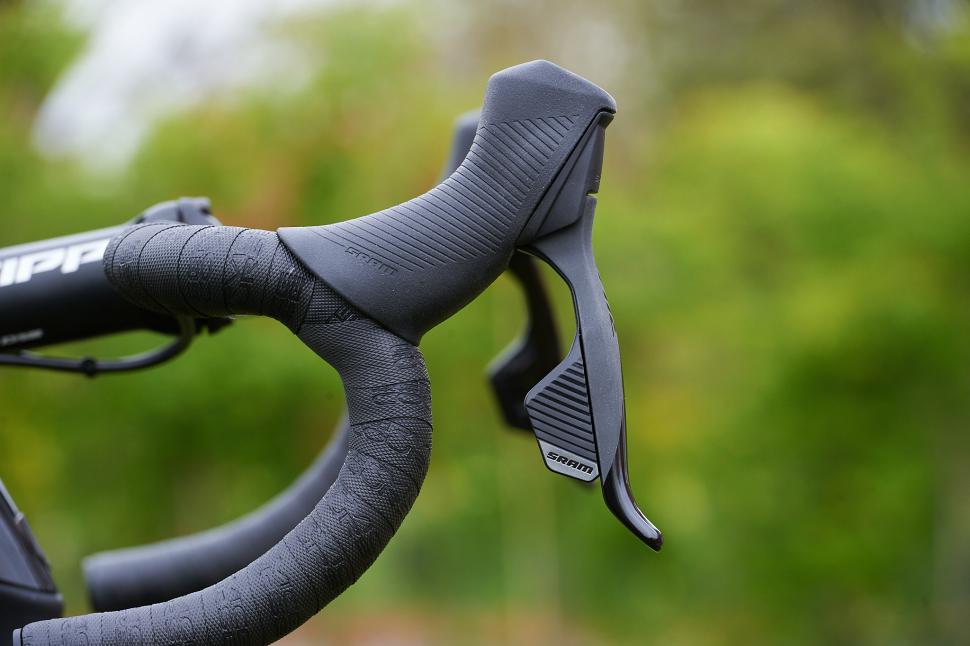

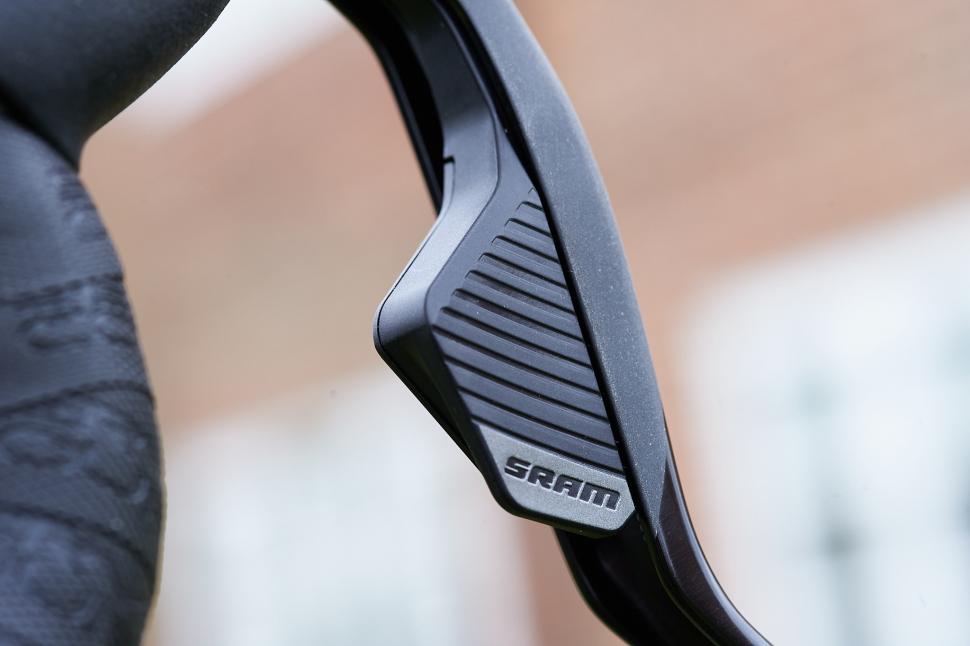

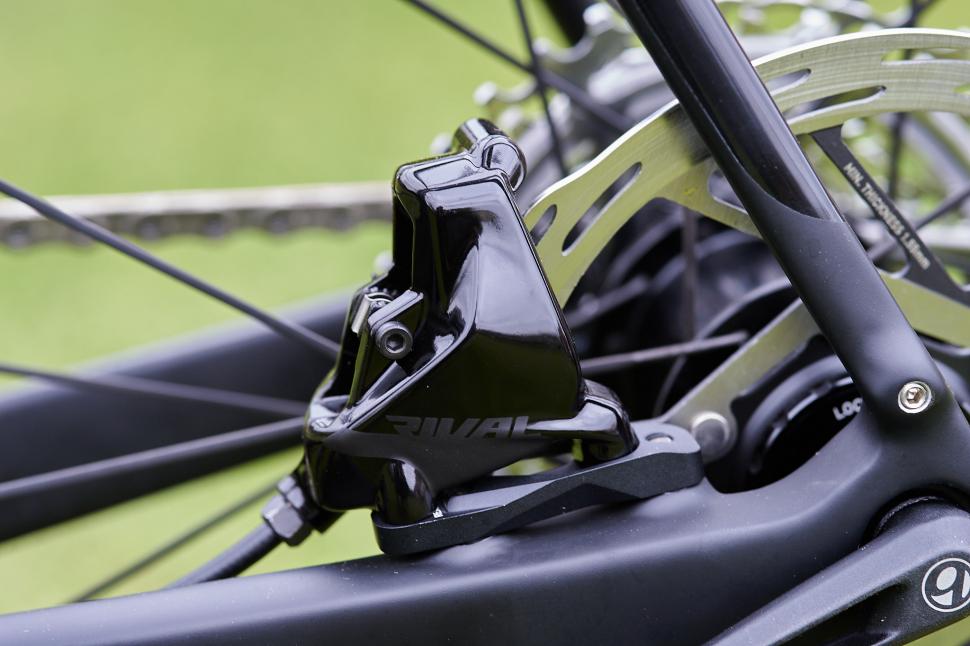
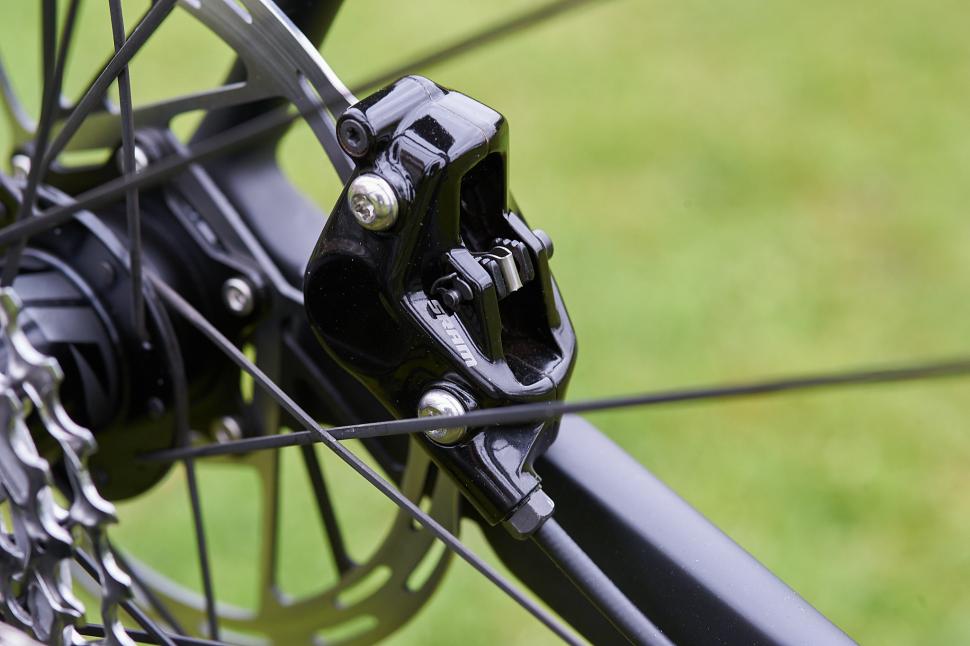

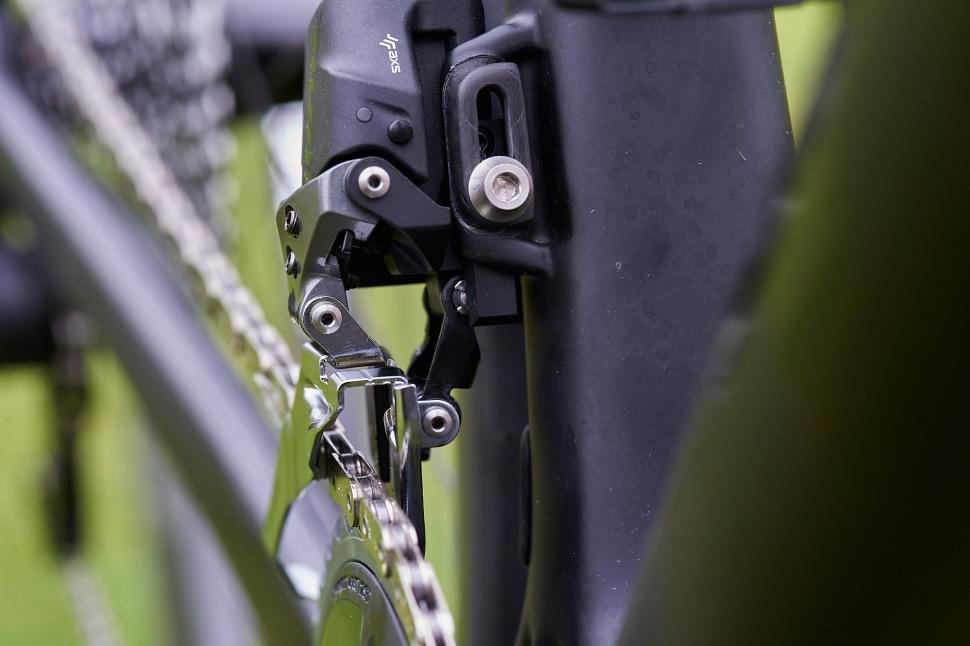
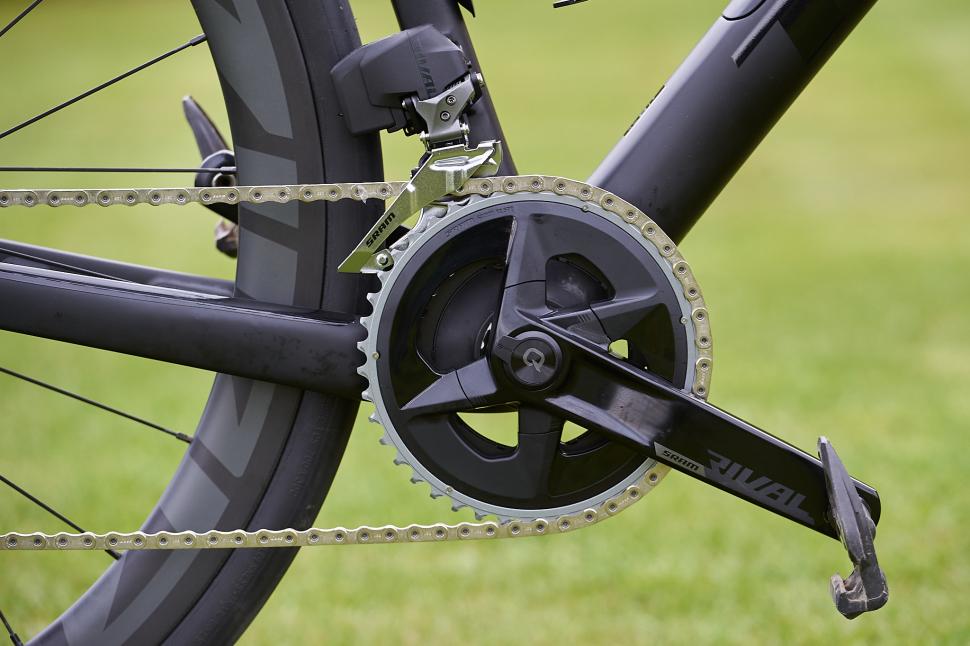
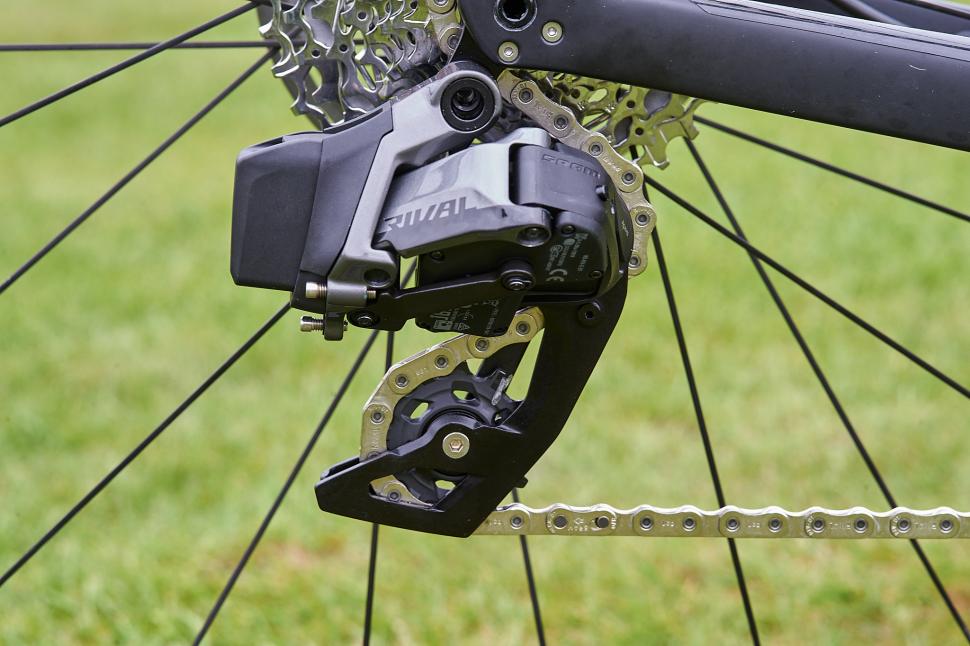
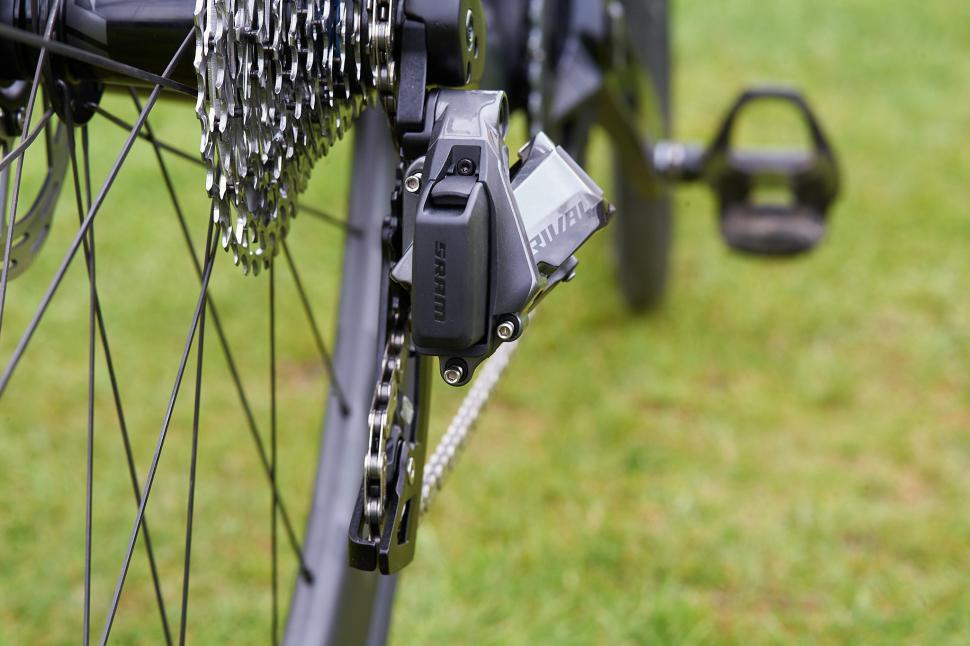
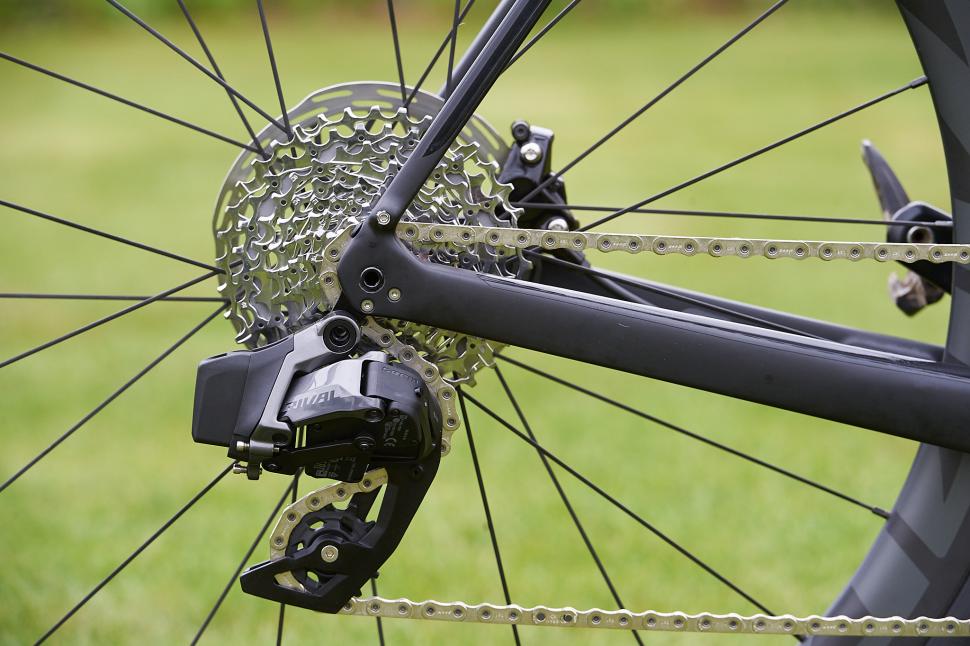

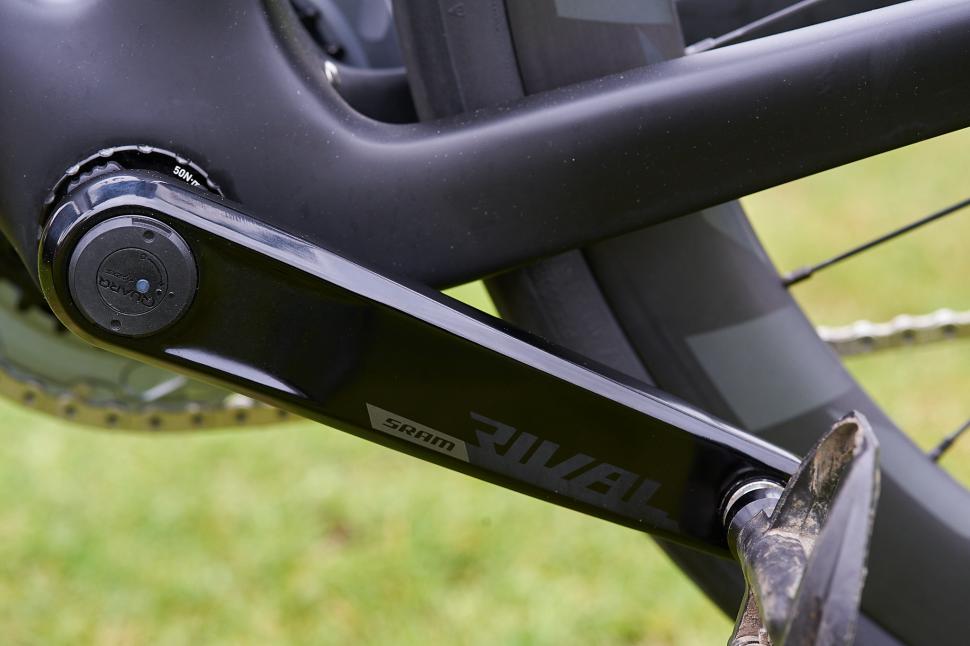
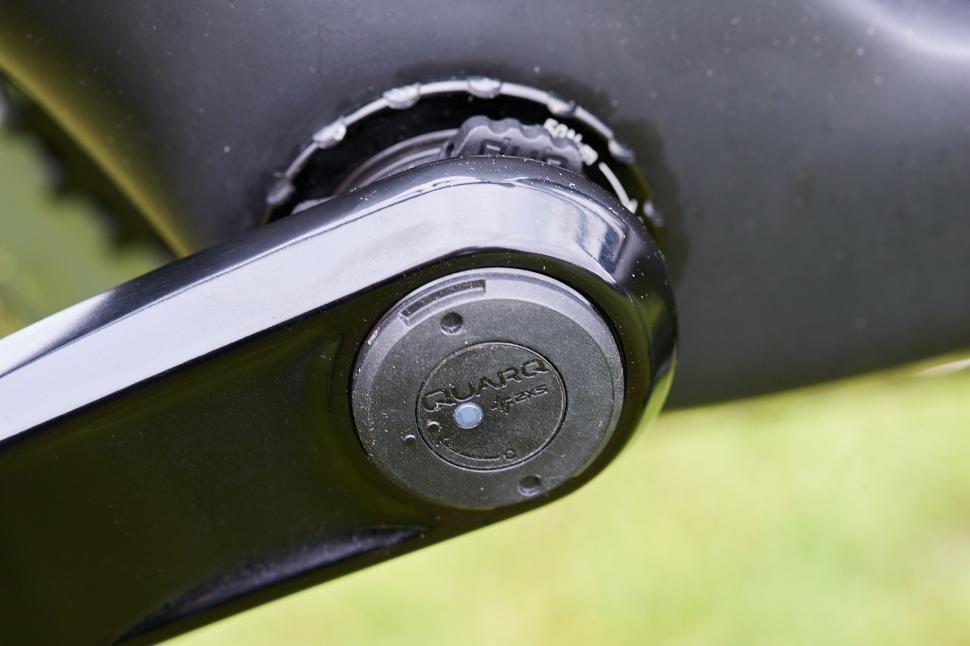
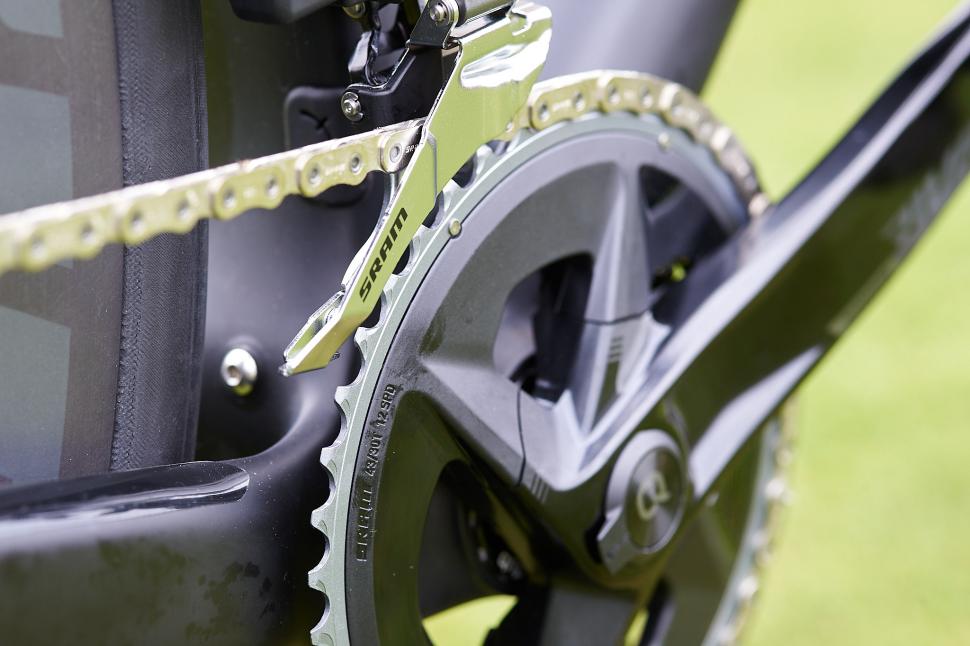

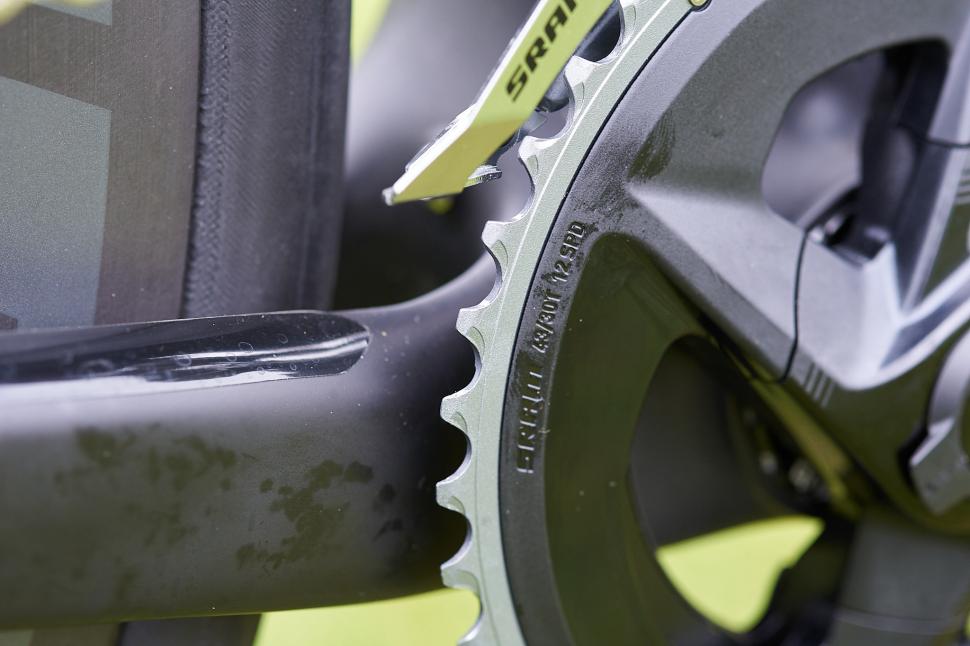
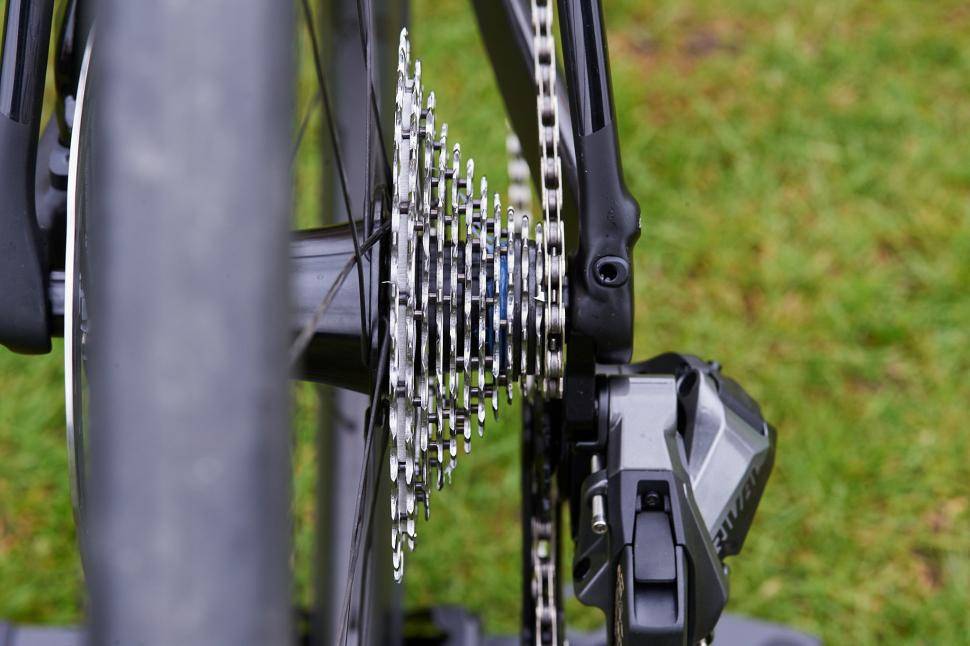

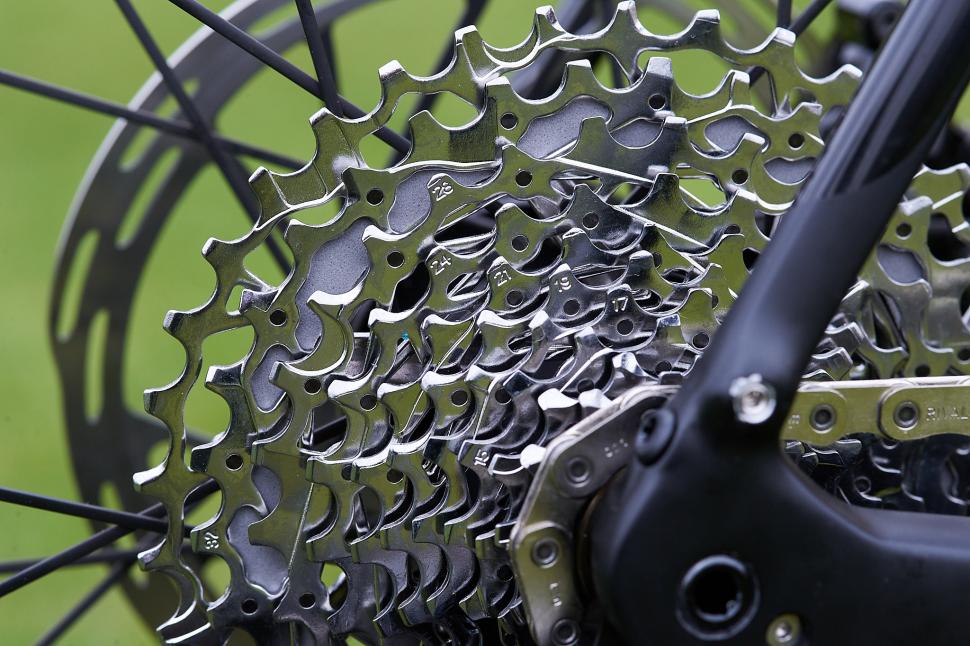
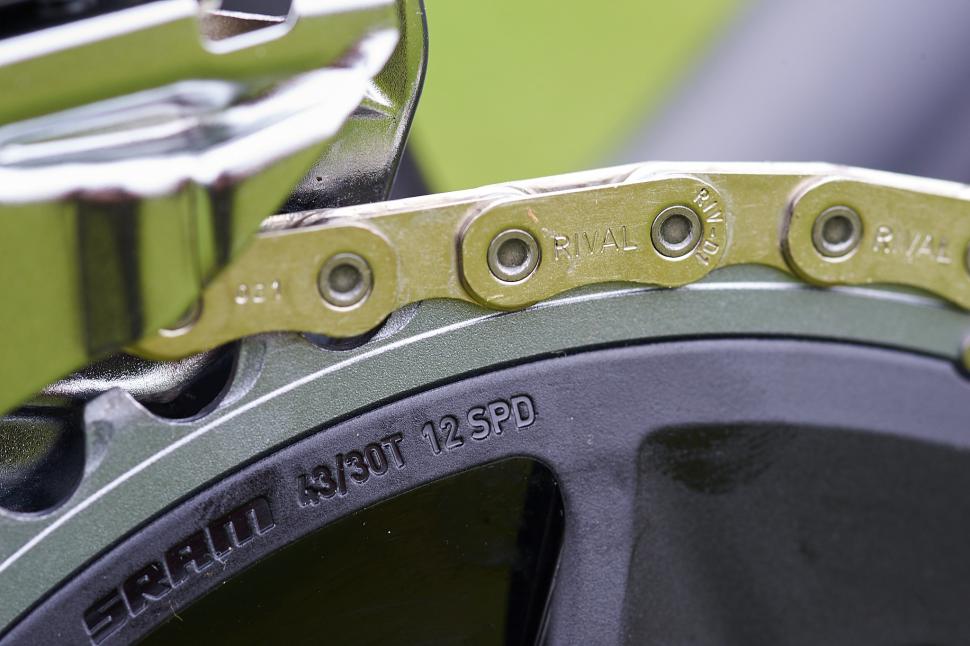



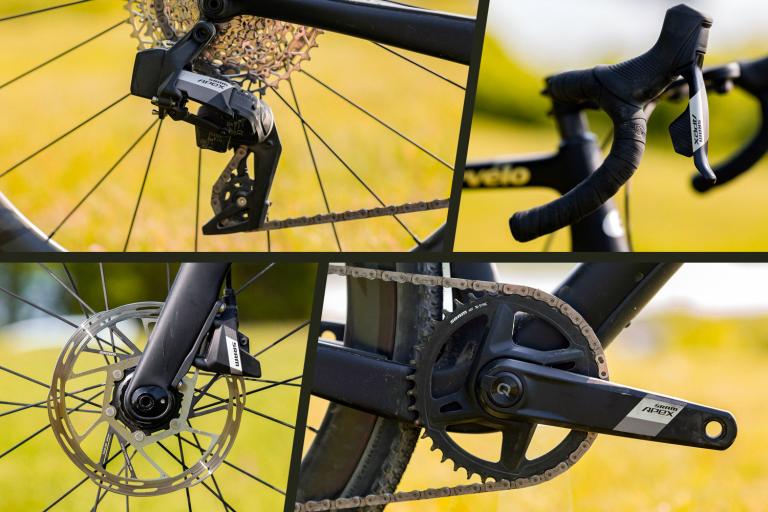
Add new comment
23 comments
I was briefly a SRAM Rival AXS rider when I bought a new bike in January. After all the anticipation, unfortunately the electronics packed up after 70 miles. All was brilliant for those 70 miles, but a replacement part was required, with delivery not for months. I was given a full refund for the bike, and eventually replaced it with a different bike with a good old fashioned mechanical groupset, Sad.
I have failed to find anyone else with a similar experience, so in the main, they appear to be reliable.
having always been on shimano, a new bike purchase 6 weeks ago has got me onto an Aethos with this rival groupset...and can compare the apples and oranges with my 2016 BMC on mechanical / rim dura ace...very different feel with the gearing is probably the less expected note outside the more obvious. Overall the new bike's weight is fine but as Red components become more available i'll be looking to swop out some cost/weight benefit items like the crankset.
Overall very happy with how the groupset is working (would like to find out if the lever bite point can be adjusted though)
Why are you just regurgitating an article published four months ago on Road CC and making it your top story? That is not how news works. I expect better. A lot better, especially as I (& hopefully many others) are paying a monthly subscription.
Er, this isn't news, though - it's a review.
And a review that contains new content (although it would be good if there was some indication of what's changed when stuff gets updated).
Not a lot of new content as far as I can see. Dressed up as news and placed as the lead story. So it stands that it's a pretty poor show.
Are you new here? It's hardly unusual for Road.cc
Not really clear how it's 'dressed up as news' when it quite clearly has the word 'Review' underneath, along with the yellow colour-coding that distinguishes reviews (as opposed to red for news).
Obviously, there no real need in 12s transmission, 11s is totally enough for most. 12s cassettes are expensive and has a big jumps between sprockets. The market is full of reliable 11s transmissions, where you can choose and combination chainrings and cassettes you want/need.
Rival AXS - Cheap wireless groupset is a nice one. It is not critical heavy, but that crankset... heavy as hell. and with own intergrated spider - absolutely rubbish. The best deal, I guess, who wants 12s wireless transmission is to use mechs and shifters Rival AXS with crankset and casettes from Force AXS. That will be the optimal.
As for me, I would prefer 11x2 transmission - 52/36 at front with 12-28 cassette
11s? Pah! Even 10s is two cogs too many! https://www.sheldonbrown.com/k10.shtml
this calculator is more convenient. Don't thank me
http://www.gear-calculator.com/
¡7 speed ! Luxury. 5 speed when ah were a lad
Mate has SRAM Red (I think) on his bike. The front derailleur box is so big it fouls the crank on his custom titanium frame... that's when he's not fishing the chain back from being dropped again. The rear changer is one ugly beast too. He had the original SRAM wireless setup, and it has improved from that which he found irritatingly sluggish - designed so to save battery life.
In my bike fixing days, SRAM front derailleurs were far too fussy and they don't seem to have improved much.
Still could be worse, you could have my mate's super-expensive bottom bracket which regularly seizes up due to some complicated adjustment system that works free. We delight in telling him how many ordinary bottom brackets he could have had for the same price. It occurs that his bottom bracket is worth more than his MK1 Mondeo that he has driven from new.
I think that says more about the frame than it does about the SRAM kit which seems to work on most other frames.
Haha! You beat me to it.
So this person has a custom frame that has a BB that's causing issues and a front mech that doesn't fit.
Well should have probably specced a different bb and told the builder the front mech dimensions. Neither are the fault of the groupset.
Oh if it dropping chains is also probably isn't set up correctly,so there's that.
Funnily enough I had the exact same problem with my GRX Di2 front mech on my off the peg Ti frame. Turns out some of the band-on front mech brackets out there have such sloppy tolerances that the mech fouls the frame. A different mount and all was well. Took me ages to work it out though.....
Looks like a nice groupset for any bike outside of a racing road one where weight is a big consideration.
That's if you can get hold of it anywhere, I imagine it probably won't be available to purchase as a groupset for a year!
While the 'groupset' price is competitive, the replacement costs of the chain, cassette, freehub (you'll need a new one!) and so on are crippling.
Why couldn't they just have made Rival 22 electronic. It would have been about £800 and absolutely killed the market for mechanical Ultegra, without forcing everybody to buy new wheels and tying everyone into the SRAM ecosystem of spares...Oh that's it. It's another advance that's mostly about forcing us to buy parts from the manufacturer, rather than actually about enhancing cycling.
£28 for a chain isn't too bad and XD drivers have been commonly available for a number of years for wheels. An XD driver is a better design as well as you can't have a gouged freehub and a stuck cassette with one.
However, you're right about the cassette being very expensive, significantly more than an Ultegra one.
Expensive cassettes seem to be a "feature" of Sram 12 speed. Even GX Eagle on the MTB side is >£100 vs £75 for 12 speed SLX. Contrast that with 105 11 speed at £50 and Ultegra for ~£75. Basically SRAM charge a premium for 1 extra cog that Shimano tend not to.
I was going to buy a group set to upgrade my Canyon to electronic shifting. Unfortunately they don't sell Rival as rim brake, and Force is too expensive to mix and match. Shame.
There seems to be an 50% off offer on Red Axs Rim braked shifters from CRC - they are £20 dearer than the Rivals above.
https://www.chainreactioncycles.com/sram-red-etap-axs-shift-brake-lever-...
I think Sram have a good contender to go after Ultegra/GRX800 Di2 in the upgrade/self build market here. I recently (Dec 2020) finished a GRX DI2 build after carefully and regretfully ruling out Force AXS over price (about another ~£300). Based on the price here and the price on the GRX Di2 review on offroad.cc they are now near price parity but with GRX 815 about 600g lighter vs AXS much much easier installation.
Just a shame that both probably arent particularly available easily.
Good luck to Sram - more competition is good for the consumer. I wonder how quickly Shimano will push down their Semi-wireless tech from next years Dura-Ace? Shimano is probably quite luckly that Covid will reduce Sram's ability to deliver in volume for the next year or so, so its a good time to play catch up.